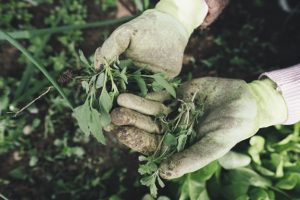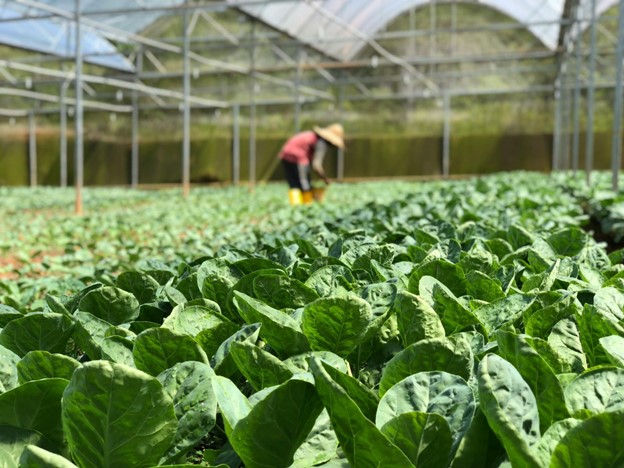Are you tired of spending money on groceries? Or, do you just want to add some fresh vegetables to your meals? Growing your own vegetable garden at home is a great solution! Not only does it save you money, but it also allows you to have control over the quality and freshness of your produce. You don’t need a lot of space or experience to start growing vegetables at home. In fact, it can be a fun and rewarding hobby for beginners.
In this guide, we will cover everything you need to know to get started on your journey from garden to table. Let’s literally dig in!
Choose a Location for Your Garden
When choosing a location for your vegetable garden, there are a few important factors to consider. First and foremost, you want an area that receives ample sunlight throughout the day. Most vegetables need at least 6 hours of direct sunlight to thrive. Additionally, make sure the location is easily accessible for watering and harvesting.
If you live in an area with extreme weather conditions, such as heavy rain or strong winds, you may want to consider investing in a greenhouse. You can contact greenhouse design and construction experts to help you create the perfect space for your vegetables to grow. Greenhouses provide protection from harsh weather and can extend your growing season, allowing you to enjoy fresh produce year-round.
Gather the Necessary Tools and Supplies
To ensure a successful vegetable garden, you will need some basic tools and supplies. These include a shovel or spade for digging, a rake for leveling the soil, a watering can or hose for watering your plants, and gardening gloves to protect your hands. You may also want to invest in some organic fertilizer or compost to nourish your plants.
It’s important to choose high-quality tools and supplies to make gardening easier and more efficient. You can find these items at your local garden center or hardware store, or you can order them online. Don’t forget to also invest in some seeds or seedlings of the vegetables you want to grow.
Decide What Vegetables to Grow
When deciding what vegetables to grow in your garden, consider which ones you and your family enjoy eating the most. It’s also a good idea to research which vegetables are best suited for your climate and growing season. Some easy-to-grow options for beginners include tomatoes, lettuce, carrots, and green beans.
You can also choose to grow a variety of herbs to add flavor to your dishes. Keep in mind the space and sunlight requirements for each vegetable when planning your garden layout. And don’t be afraid to try new things – experimenting with different vegetables can be a fun part of gardening!
Prepare the Soil for Planting
Before you start planting, it’s important to prepare the soil in your garden. The soil should be loose and rich in nutrients for your vegetables to thrive. You can achieve this by adding organic matter such as compost or manure to the soil.
Using a shovel or spade, turn over the soil and mix in the organic matter. This will also help improve drainage and aeration, which are crucial for healthy plant growth. It’s also a good idea to test the soil’s pH level and make adjustments if necessary. A pH level between 6.0-7.5 is ideal for most vegetables.
Start Planting Your Vegetables
Now that your soil is prepared, it’s time to start planting! Follow the instructions on your seed packets or seedlings for proper planting depth and spacing. Make sure to water your newly planted seeds or seedlings thoroughly after planting.
If you are planting multiple varieties of vegetables, it’s important to keep track of where each type is planted so they don’t overcrowd each other. You can use plant markers or create a garden map to help with this. And remember, it’s okay to start small and gradually add more vegetables as you gain experience.
Maintain and Care for Your Garden

Gardening is not just about planting, it also requires ongoing care and maintenance. This includes regular watering, weeding, and monitoring for pests or diseases. It’s important to water your plants deeply once or twice a week instead of lightly every day. This encourages deeper root growth and makes your plants more resilient to drought.
You should also regularly check for weeds and remove them as they compete with your vegetables for nutrients and water. And if you notice any pests or diseases, try using organic pest control methods first before resorting to chemical pesticides. With proper care, you will soon be enjoying a bountiful harvest from your own homegrown vegetable garden.
Congratulations, you have now learned the basics of starting your own vegetable garden at home! From choosing a location to planting and caring for your vegetables, you are on your way to enjoying fresh produce straight from your backyard. Remember to be patient and don’t be afraid to ask for help or advice from experienced gardeners. With time and practice, you will become more confident in your skills and may even expand your garden to include new varieties of vegetables.

Recent Comments